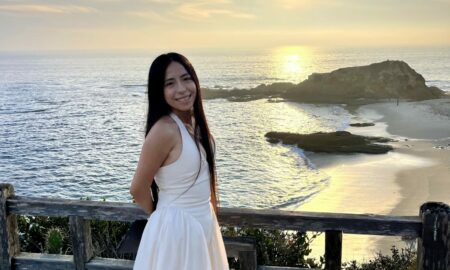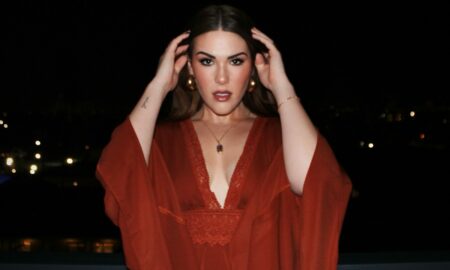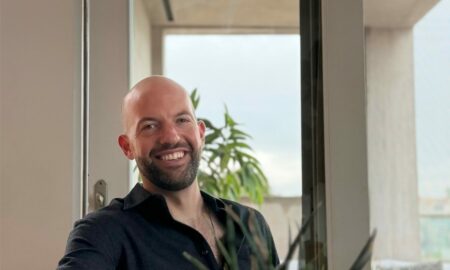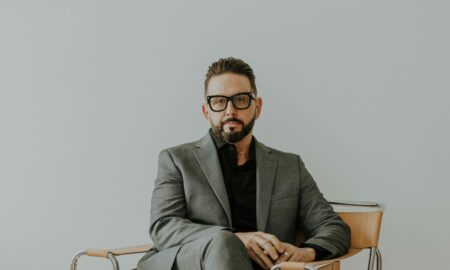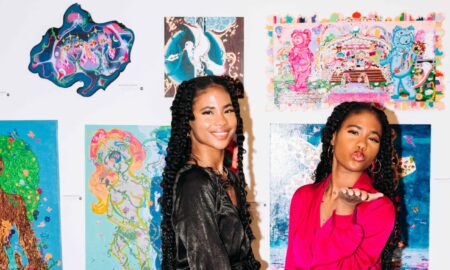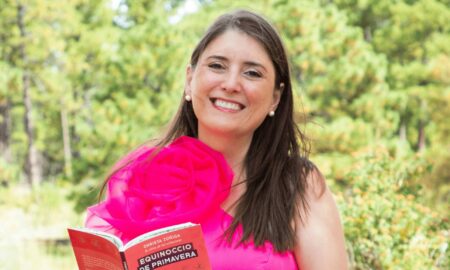

Today we’d like to introduce you to Ken Flewellyn.
Ken, please kick things off for us by telling us about yourself and your journey so far.
I was an only child and we moved a lot. Even once we settle down I was a latch key kid. My parents worked mad far from home so at a young age I was really drawn to solo activities. I think where kids normally played board games I drew, I built stuff I played music, and I skated. I played multiple instruments, built my first computer when I was 13, I was ill in the skate park and could draw a pretty sweet ninja. All of that stuff incidentally taught me early the value of failure. No one went to the skate park and 360 flipped a stair set their first try. Every first painting, or song or project of any kind was terrible. Eventually though, great work is forged from failure. That work ethic always stuck with me.
Our place growing up was designed with many difference cultural motifs from around the world. My parents grew up poor and we weren’t ballin when I was kid either. I think it was my mom’s way of traveling. She had sculptures and wood block prints and trinkets from all over the world. Some gifts and others items loved, nothing of any real value beyond its aesthetic. I loved it but I was drawn to reproductions of Japanese wood block prints the most. A lot of my first doodles were emulating these patterns and designs. I’d get home from school, blast some Biggie and doodle in a composition book.
As I got older my attention was more drawn to making functional objects rather than drawing. Once I started college I hadn’t drawn in years and was set on becoming an engineer. I got into photography for a bit to fill that need to create but it just wasn’t enough. I took one drawing class to fulfill a requirement and fell right back into it. I’d forgotten how much I loved drawing. Those first drawings were terrible, but I couldn’t stop. I’d draw people at coffee shops our around campus. I used to stay up crazy late at the Denny’s drinking coffee and drawing weirdoes. I eventually graduated with a degree in illustration.
Once out of school I began teaching myself to paint at night while I worked days. I did some VFX work, some web design, some television production work but I never really stopped making art. I used to show in a one-night pop-up show Cannibal Flower in LA every month. I used those shows to work on my skill and try out new ideas so that I could eventually approach galleries with a cohesive body of work.
Can you give our readers some background on your art?
I’m primarily a realist oil painter. The actual process of creating my paintings is intensive. A finished painting will normally have 100+ hours of work put into it. I’ve refined this process over years of painting. Even as I get faster, I find a way to reinvest that time into making a better product. I’m a bit of a perfectionist and slightly obsessed but I love it. They’re fun pieces to make.
My work has always been about music. It’s been a driving force as long as I can remember and still propels me to this day. I’ve always loved its ability to create harmony where there was conflict. My paintings are carefully designed crops that focus on a person’s place in a culturally mixed world. In a way they’re anti-portraits. I refrain from showing the subjects identity in any direct fashion and let her story be told through her style, attitude and body language.
Using music as a lens to view borrowed motifs from my childhood, I’m able to create paintings that challenge our assumptions about identity. Cultural identity is layered and incredibly complex. As a native Angeleno this is obvious to me but the same can’t be said for the rest of this country and many others. I hope that my paintings show the futility in painting others with a broad brush and find beauty within nuance.
Do you think conditions are generally improving for artists? What more can cities and communities do to improve conditions for artists?
We’re in the middle of a new renaissance. With the advent of social medium people’s voices can be heard faster than ever before. With so much art being produced and shared it’s easy to feel lost in the noise. This industry has always been hard but it’s important to remember why you do it. Is painting fun? Then paint. Find a mentor that can help you figure out the place for you- there are many different ways to get your art out there.
As a city, support your local artists by going to galleries and attending art walks. Businesses and government agencies, sponsor murals and sculptures. Magazines and media can continue to feature artists. LA is amazing and is only made better by celebrating creativity.
What’s the best way for someone to check out your work and provide support?
I’m currently represented by Thinkspace Projects in Culver City, I had my first sold out solo show there last year. I’ve just begun working on another solo exhibit at Thinkspace that’ll open in October 19. If you’re not local, no problem. I show all around the world and could be coming to a town near you. Check out my site for details on upcoming shows.
For some behind the scenes looks, sneak peeks and just overall fun art stuffs follow me:
https://www.instagram.com/kenflewellyn/
Tweets by flewkart
http://flewkart.tumblr.com/ Tumblr
Contact Info:
- Website: http://kenflewellyn.com
- Email: [email protected]
- Instagram: https://www.instagram.com/kenflewellyn/
- Twitter: https://twitter.com/flewkart
- Other: http://flewkart.tumblr.com/












Getting in touch: VoyageLA is built on recommendations from the community; it’s how we uncover hidden gems, so if you know someone who deserves recognition please let us know here













